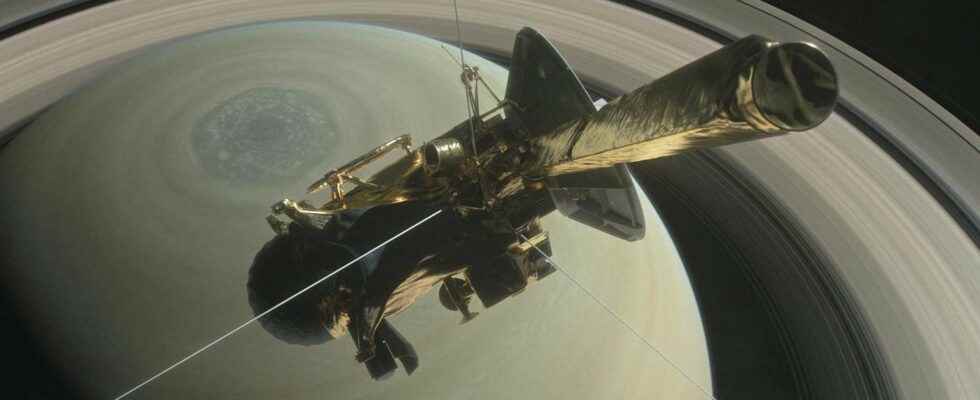An article, published on the site Arxiv, explains that the next step for NASA would be to devote itself to sending manned missions to Saturn after the arrival of colonists on Mars. The study provides information on the scientific importance of robotic exploration missions to the most distant planets of the Solar System.
Astronauts could explore Saturn, Jupiter and their moons fifty years from now. This is what explains a study published on ArXiv on May 17, 2022, led by a team of American, Chinese and Dutch academics as well as researchers from the Nasa. The study, named ” Impact of economic constraints on a fixed term for manned exploration », anticipates human space exploration and robotics over the next few decades. The milestone of a manned mission to Mars could be reached by 2030, more distant planets such as the gas giants of our Solar system would also be subject to possible colonization. The astronauts would reach the asteroid belt and the system Jovian between 2071 and 2087, while the moons of Saturn could be visited between 2129 and 2151. A distant and uncertain bet, when around fifteen robotic missions have already crisscrossed these regions of the Solar System.
Pushing the boundaries of space exploration
The study of May 17 is science fiction, as it projects a distant future of sometimes more than 100 years. However, statistical analyzes carried out on the evolution of technologies and the budgetary capacities of NASA show that the objective of colonizing the moons of outer planets (located after theorbit of Jupiter) would occur soon after the conquest of Mars. This task is a real pivot for the future of the exploration of the Solar System. According to the researchers’ projections, the arrival of colonists on Martian soil in 2037 would lead to a crossing of the asteroid belt no earlier than 2071, of the vicinity of Jupiter in 2103 and a overview of Saturn in 2132. If the arrival on Mars does not take place until 2048, the planning of the missions would be shifted by several decades, with manned ships on the outskirts of Saturn in 2150.
Such programs would require a consequent adaptation of the budgets of the space agencies. The study thus highlights the financing of the Apollo program, of about 20 billion dollars between 1969 and 1972, brought back to 123 billion dollars by adjusting it to inflation in 2020. The establishment of such projects would provide a real technological effort, the researchers praising the scientific contribution of human missions to the confines of our solar system. At the same time, the emphasis is placed on the needs of a constantly growing terrestrial population: exploration would thus disguise itself as colonization, supposed to provide a potentially overpopulated Earth the material needs required.
Robotic missions to prepare the ground
Despite the distant dates, the study seems utopian, the technological and financial challenge imposed by such projects seeming exceptional. NASA is currently dedicated to return of astronauts to the moonby 2025. Regarding the arrival of humans on Mars, astronauts will probably not set foot on the surface of the Red Planet before 2030.
For the time being, the planets located beyond the asteroid belt do not seem to be a priority for the American space agency. A report published in April, however, recalled the scientific interest of robotic missions to the ice giants, Uranus and Neptunewhile two probes should fly over the surroundings of Jupiter over the next few years. The latter, named Juice (Jupiter Here Moon Explorer) and Europa Clipper, will be launched in 2023 and 2024 respectively to study the satellites of the Jovian system. No space station to the 2001: a space odyssey in the next few years, but Juice and Europa Clipper will likely provide some great visuals of Jupiter and its most prominent moons.
Interested in what you just read?
